
16:1 King James, Isaiah 14: 9-18
Considered by many to be the mightiest metropolis of the ancient world, Babylon was built to the credit of Hammurabi (1728-1686 B.C.); however, the great Nebuchadnezzar (604-562 B.C.) took it to another level. According to the Antiquities of the Jews by Josephus Nebuchadnezzar erected elevated places for walking of stone, and made them to resemble mountains. He also planted many sorts of trees. His magnificent pensile paradise built for his comfort, and his wife, was considered a wonder of Babylon. The expansion, refinement, and perfection of this empire reached its height under the rule of Nebuchadnezzar (604-562 B.C.).
To confirm reports of antiquity and the magnificence and authenticity of this empire, careful excavation work began dating from 1899 through 1913, providing information about the phrase Babylon The Great. The discoveries were no less than fantastic, confirming the Ziggurat and the Hanging Gardens. In addition, a wall was found surrounding the main city that was more than 14 miles long and 136.5 feet thick. Many city gates were excavated. One famous gate displayed 575 enameled dragons, bulls, and lions.
The north entrance called the processional street passing under the Ishtar Gate went pass the royal place. The temple of Marduk, meaning, the creator and the king of the universe, are also unearthed. The palace of the king was gorgeously decorated with a magnificent banquet hall and throne room which was 56 feet wide and 168 feet long. The E-Temenan-Ki, or the house of the foundation platform of heaven and earth, was believed to have been the ruins of the ill-fated Tower of Babel.
The Hanging Gardens were found on the extensive ruins of a quadrangle area. This quadrangle area was comprised of high-vaulted crypts and subterranean cellar rooms. These extensive ruins are believed to be the foundation structure of the famous gardens, one of the Seven Wonders of the Ancient World. The place for the distribution of oil and barley to workers of the nation was also found. One must immediately recognize that when speaking of Babylon, Nebuchadnezzar immediately comes to mind. No doubt his worldwide reputation of being a feared, tyrannical, ambitious ruler has caused this synonymous affiliation.
The major prophet Isaiah is the single most quoted Messianic prophet. His ministry as a prophet of the Lord involved judgment over nations, prophetic promises to the nation of Israel, predictions of the life and ministry of Christ, as well as, accurate prophetic provisions for the church. Isaiah received his call in the year King Uziah died. He saw the exalted Lord by vision, receiving the consecration from the Lord to his lips and accepting the commission as a prophet of the Lord. (see Isa. 6: 1-8)
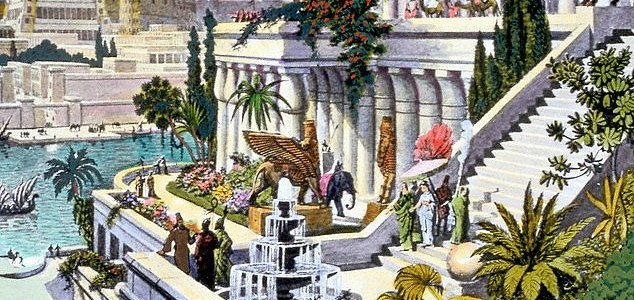
“The Hanging Gardens of Babylon” by Maartin Heeskerck
Declaring the end from the beginning, speaking of things to come, calling things to be, raising up and pulling down, building or destroying; these are known to be within the nature of the ability of the true Lord of the Universe. With reference to Babylon, and the captive people, Israel, the Lord promises to have mercy on Jacob; and declares His choosing of Israel, their liberation from Babylon, their deliverance from their oppressors, their return to the Promise Land, and the rest from their sorrows (see Isa. 14: 1-3). As a true prophet of God, Isaiah receives assignment from Jehovah Elohim to declare a prophetic taunt against Babylon and its proud, pompous, titan tyrant king. This word, predictive in nature, preceded the magnificence that Babylon would reach. Isaiah foresaw the pride and rebellion of its future monarch and released the most accurate definition of its downfall. Knowing that the invisible dark forces would be simultaneously addressed in this taunt would be simultaneously addressed in this taunt of prophetic judgment, we are directed at this time to deal firstly with the natural fulfillment of God’s powerful predictive word.
The prophet is inspired and commanded by the divine Spirit to foretell as a proverb to Babylon and Nebuchadnezzar that judgment is imminent. In the year 1611, the King James Bible renders verse four, “proverb against the king of Babylon;” with a side margin note calling it “a taunting speech.” “Then shalt thou use this mockage upon the king of Babylon,” found in the Bishops’ first edition, in the year 1568. The word is rendered again as a proverb, a jeer, a song of derision, a taunt-song, a taunt over the king, and finally a parable, or poem.
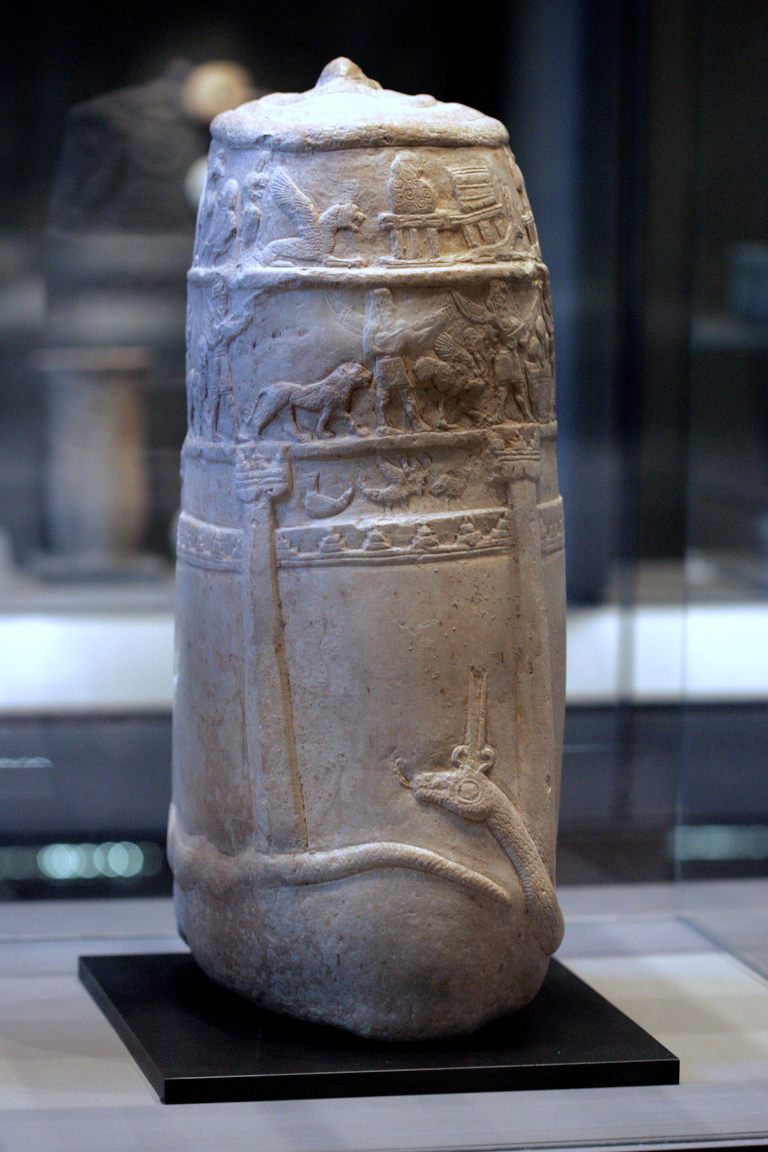
A kudurru “boundary marker” found in Susa. It features the most prominent gods in Babylonian/Susan pantheon. At the bottom of the marker is the horned serpent, a symbol of Merodach, also called Marduk.
The all knowing, foreseeing, omnipotence of God would be released through His prophet as a taunt and derision recorded to reveal the specificity of God’s description involving future events. Isaiah is directed in verse four to predict in proverb, foretell in taunting speech, declare in poem, predict in parable; to prophetically taunt a future king, to release a taunt-song against the height of a future kingdom, to sing a specific song of derision to jeer at the king of Babylon, and to use a mockage, as he is inspirited by the Spirit of the Lord, declaring in speech what is yet to come to pass.
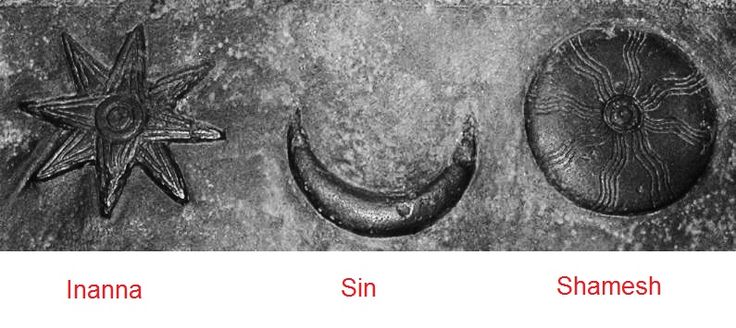
Seen here is the star of Ishtar, the moon of Sin and the sun of Shamash. These symbols have been used by many people over many millennia and given many names, but always represent the same spirit.
This reveals the power of God’s word – His ability to release the answers and His specific intentions, given against the wicked, in a word, even through a human vessel. The Lord enables His prophets to know. The Lord used Isaiah to address the spiritual forces of darkness – the so called gods of Babylon – as well as, give the description of its fall from the height of its future pomp, and finally the death and judgment of Nebuchadnezzar.
He speaks of the oppressor ceasing and of the golden city. He speaks of the power of the wicked being broken and the scepter of rule being no more. The prophecy goes further, stating that rest will come to the people and singing will break forth, after the smiter whose anger and continual striking is no more. He sings of the freedom of the region and predicts the liberation of Creation.
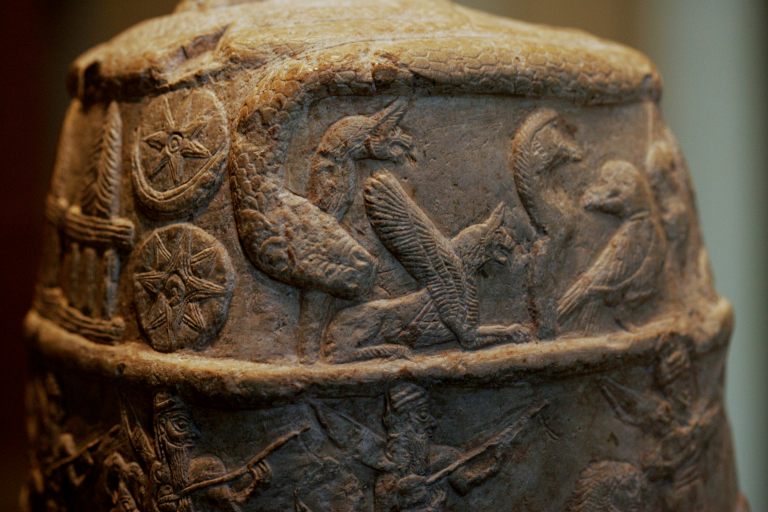
A close-up of the kudurru stone shows not only the star of Ishtar but also the crescent and star, a symbol that continues to be used by numerous factions, nations and religions.
Then in verse nine, he speaks of Sheol or the nether parts of the earth, being moved. A good rendering would be ‘stirred’ – specifically at the death of this titan king. For the prophetic taunt song continues, stating that Sheol stirs up the dead for the king; clearly speaking of Rephaim or giants – the chief ones of the earth. The side note in the 1611 King James Bible says “or great goats,” defining these giants. These titans who lived, died, and drove kings from their thrones; who were dethroned from their own reign, are stirred to meet this king at his coming, as we previously mentioned in Pezron.
This prophetic mockage continues, in divine accuracy, describing the future conversations that will take place in the nether parts, as ancient titan god-kings, together with contemporary warriors – Rephaims, giants, or great goats – begin to jeer with their own mocking conversations, at the destruction and judgment of this so-called god-king, Nebuchadnezzar. This jeer at the eliminations of his pomp, and his transformation into their shared weak and defeated condition, imprisoned in Sheol.
Isaiah continues his jeer against the assumed titles ascribed to this king and kingdom. They are systematically addressed with taunt and prophetic prediction: “light bringer….day….son of the morning…..shining one….son of the dawn?” Isaiah follows with predictive judgment: “blasphemous satanic king of Babylon….what a fall from heaven on high……how low and limp you lie….sprawling helpless across the nations.”
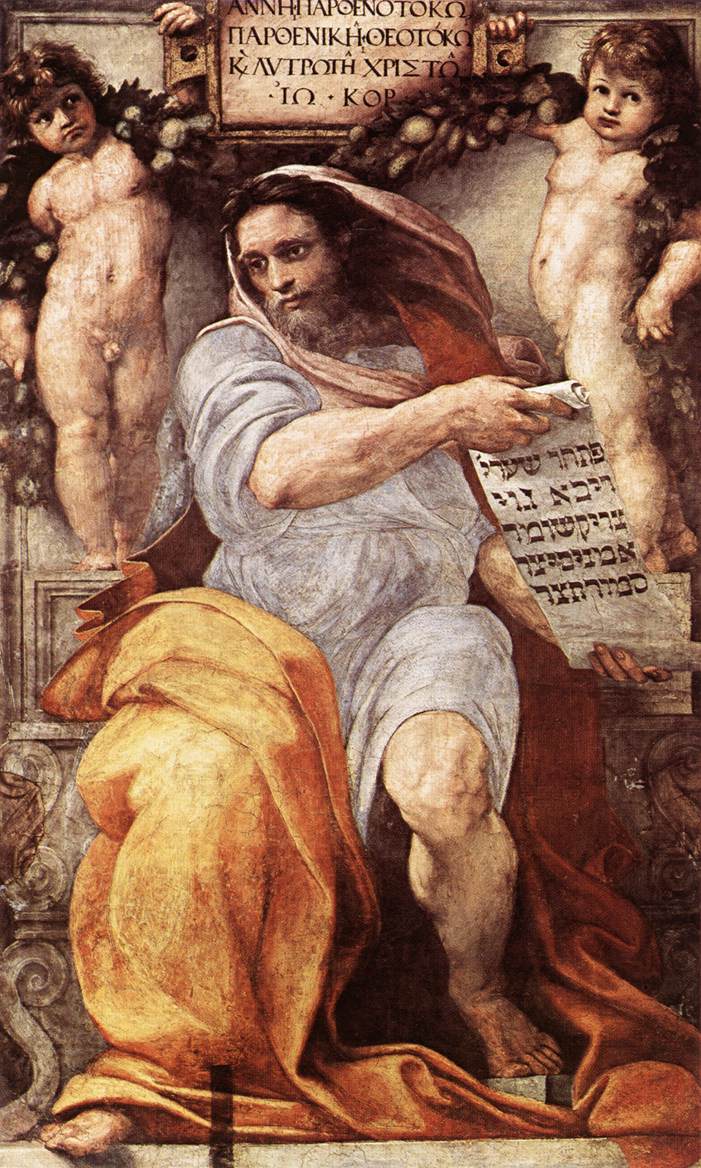
“The Prophet Isaiah” by Raphael
The prophet continues revealing the ambition, the pomp, and the presumption, of the king of Babylon as the cause of his judgment. The earlier translations better render the words, “I will ascend” In Isaiah chapter fourteen versus thirteen and fourteen as “I will climb.” The prophet foretells of this king’s decision to etch his position in history by being like the Most High. Isaiah continues, “Yet you will be brought down to hell to the sides of the pit;” you will be looked upon and considered. The tone of this mockage is clear in identifying his termination in hell. This prophetic mockage continues again to describe the imprisonment of the tyrant with others that shared his same persuasion. This spirit that has operated from the dawn of time propagating the life, religion, motivation, and cruelties of this titan race, drove them to aggressive self-seeking, possession coveting, and oppression against the human race. This prophecy is subject to what I call “the law of the double fulfillment.” We will address the fall of Satan in a later chapter.
SAINT JEROME AND BISHOP LUCIFER
Bishop Lucifer of Cagliari first appears in history as an envoy from Liberius of Rome to the Emperor of Constantius the second, requesting the convening of the church council. At the council of Milan in A.D. 355 he defeated Athanasius of Alexandria against Arian attempts to secure his condemnation by Western Bishops. It was reported that Constatius the second, a supporter of Arian theology confined Bishop Lucifer for three days in the palace, where Bishop Lucifer continued to argue vehemently. Along with Eusebius of Vercelli and Dionysus of Milan, he was exiled. He traveled first to Syria, then to Palestine and finally to Thebes in Egypt. In exile he wrote fiery pamphlets to the emperor in which he proclaimed himself to be ready to suffer martyrdom for his beliefs.
Saint Jerome was one of the most important Church Fathers and Bible scholars of early Christianity. Following a vision in A.D. 374., he changed his life to devote himself to the study of the Bible. He was ordained a priest in A.D. 379 and was commissioned by Pope Damascus. After Pope Damascus’s death this work was completed and Saint Jerome left Rome and established a monastery in Bethlehem where he lived the rest of his life.
Jerome’s translation of the Old Testament was revolutionary; he created his translation directly from the Hebrew and Syriac and his New Testament translation directly from the Greek. The result became known as the “Vulgate” and became the only standard and only translation sanctioned by the Roman Catholic Church.
All other translations of the Bible were outlawed by the “new” Pope and Saint Jerome’s Latin Vulgate was the only Bible that was allowed to be read. There is no evidence that Saint Jerome was at all involved in outlawing other translations of the Bible. He seemed more a scholar than a political leader; unfortunately, all other languages and translations of the Bible were deemed illegal. Enter hundreds of years of a period in time accurately named, “The Dark Ages.”
Catholic Bishop who died in A.D. 371 He was a Bishop of Cagliare in Sardina known for his opposition to Arianism. He was venerated as a Saint in Sardinia, thou his status remains controversial Saint Lucifer formed a small sect called Luciferians. A chapel in Cagliari’s cathedral is dedicated to Saint Lucifer. Marie Josephine Louise of Savoy, wife of Louis XVIII of France, is buried there.
The Church of Cagliari celebrated the feast of Saint Lucifer on the 20th of May. Two Archbishops of Sardina wrote for and against the sanctity of Bishop Lucifer. The congregation of the Inquistion imposed silence on both parties, and decreed that the veneration of Saint Lucifer should stand as it was. Saint Jerome contended with Saint Lucifer and his Luciferians. Jerome considered Saint Lucifer to be the author of the schism, which was splitting the church at that time.
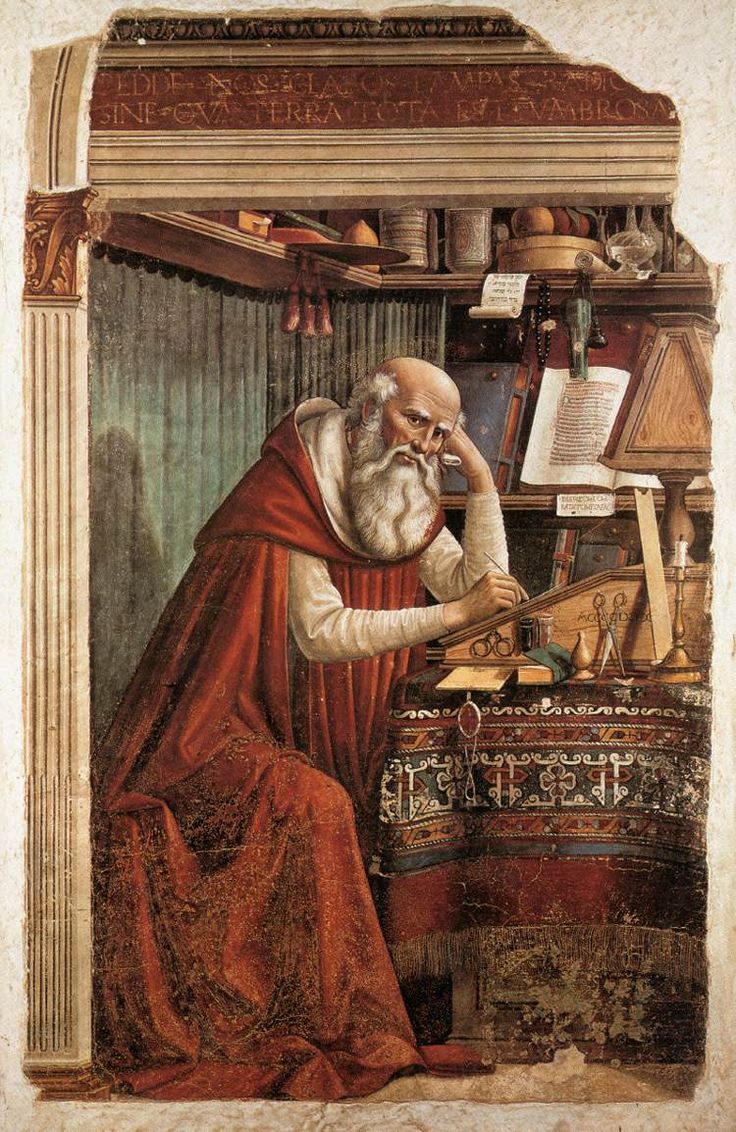
“Saint Jerome in His Study” by Domenico Ghirlandaio
When it came time for Saint Jerome to translate Isaiah chapter fourteen he translated verse nineteen as the Latin word “Lucifer” which was used as an adjective. The use of the word Lucifer, meaning “light bringer” was fine translation from the Hebrew texts. According to the Catholic encyclopedia, the name Lucifer originally denotes the planet Venus, emphasizing its brilliance. Venus is the last planet we see before the sun dawns: it ushers in the morning light.
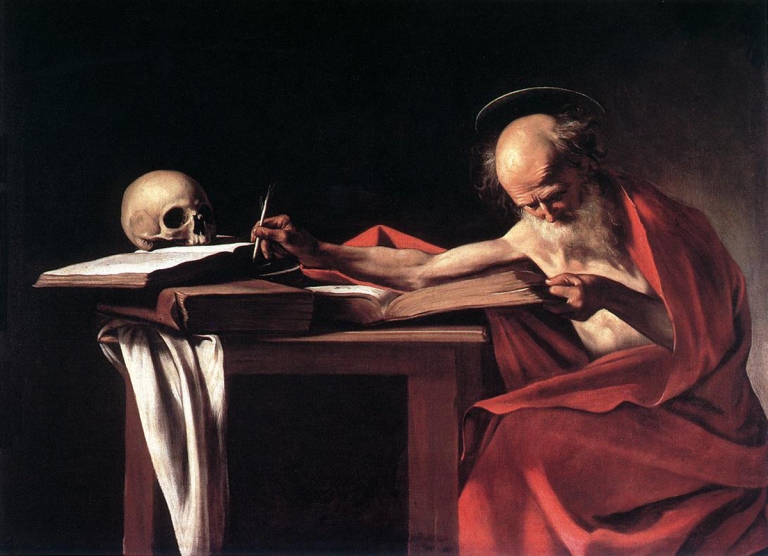
“Saint Jerome” depicted by Michaelangelo Merisi de Caravaggio
The vulgate employs the word “light of the morning.” Metaphorically, the word is applied to the King of Babylon in Isaiah as preeminent among the princes of his time. In Christian tradition this meaning of Lucifer as a proper name has prevailed; but the Church Fathers maintain that Lucifer is not the proper name of the devil, but denotes only the state from which he has fallen. By some translators capitalizing the Latin word Lucifer in Isaiah Chapter fourteen verse nineteen, it was adopted over time, after the poets used it, as the proper name of the devil. In poetry this was used in the sentence, “As proud as Lucifer,” and that terminology caught on. This hiding behind false names and images has been a strategy of the prince of darkness since the beginnings of time. He is not the day star. He is not the light of the morning. He is not the son of righteousness. He is not God’s son. He is not the sun god. The devil is not given a “proper” name in the Bible but he has been given 33 adjectives by Jehovah Elohim.
